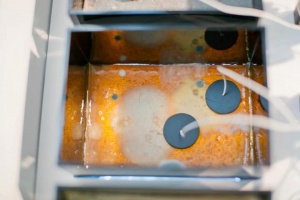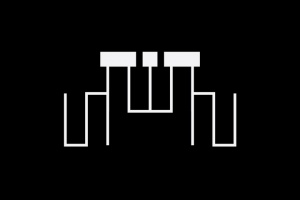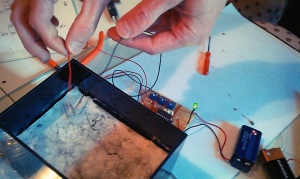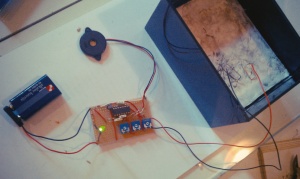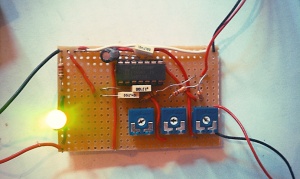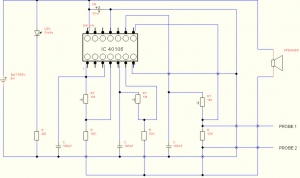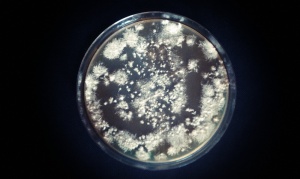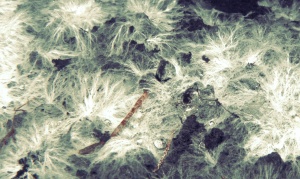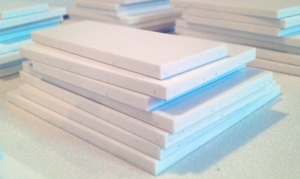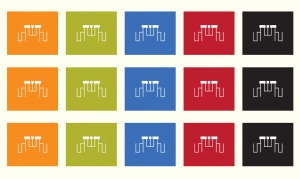Mini-Mycophone, Ljubljana
Photo by Helena Božič.
Workshops leaders:
Saša Spačal and Dr. Mirjan Švagelj (SI)
Assistant:
Kristjan Tkalec
Contents
Info for the LabBook
Pocket booklet with instructions for building MiniMycophone >> File:MiniMycophone labbook.pdf
MiniMycophone Workshop
Authors: Saša Spačal, Dr. Mirjan Švagelj, Anil Podgornik
Short Description aka Kratek opis
Make your own communication plug-in with underground network of the world! Social networks within the human species are our everyday life, they define our identity and expand our communication biotope in unimaginable ways. Do you want to connect to an even larger network, go beyond human race, enter the real 'underground' and go where no human ear has gone before? Do you want to bring the sound out of mushrooms and connect with the largest organism in the world, learn how fungi can replace plastics, cure people and save the world? All this these secrets of our planet's underground will be revealed in the workshop about the importance of mushrooms in our ecosystem and about their cultivation. You will also be able to find your connection with the mushroom by making your very own biohacked music box - MiniMycophone.
MiniMycophone - napravi si svoj lasten komunikacijski vtičnik s podgobjem sveta! Socialna omrežja znotraj človeške vrste so naš vsakdanjik, ki nas omrežuje, prepreda našo identiteto in širi naš komunikacijski biotop v neslutene širine. Se hočeš priklopiti na še večjo mrežo in preseči človeško vrsto ter vstopiti v resnični 'underground', kamor človeško uho le redko zaide? Želiš izvabiti zvok iz gob, se povezati z največjim organizmom na svetu, izvedeti kako glive lahko nadomestijo plastiko, zdravijo človeka in rešijo svet? Vse te skrivnosti podzemlja bomo razkrili na delavnici o pomenu gob v našem ekosistemu, o gojenju gob in naredili svojo bio-hakirano glasbeno skrinjico MiniMycophon.
Glossary
Mycophone
Mycophone is a biohacked music box developed by Saša Spačal, Mirjan Švagelj and Anil Podgornik. More info >> http://wiki.ljudmila.org/Mycophone.
Mycelium
Mycelium (plural mycelia) is the vegetative part of a fungus, consisting of a mass of branching, thread-like hyphae. The mass of hyphae is sometimes called shiro, especially within the fairy ring fungi. Fungal colonies composed of mycelia are found in soil and on or within many other substrates. A typical single spore germinates into a homokaryotic mycelium, which cannot reproduce sexually; when two compatible homokaryotic mycelia join and form a dikaryotic mycelium, that mycelium may form fruiting bodies such as mushrooms. A mycelium may be minute, forming a colony that is too small to see, or it may be extensive, some call it the largest organism in the world.
Fungiculture
Fungiculture is the process of producing food, medicine, and other products by the cultivation of mushrooms and other fungi.
Growth Medium aka Culture Medium
A growth medium or culture medium is a liquid or gel designed to support the growth of microorganisms or cells, or small plants like the moss Physcomitrella patens. There are different types of media for growing different types of cells. There are two major types of growth media: those used for cell culture, which use specific cell types derived from plants or animals, and microbiological culture, which are used for growing microorganisms, such as bacteria or yeast. The most common growth media for microorganisms are nutrient broths and agar plates; specialized media are sometimes required for microorganism and cell culture growth. Some organisms, termed fastidious organisms, require specialized environments due to complex nutritional requirements. Viruses, for example, are obligate intracellular parasites and require a growth medium containing living cells.
Aseptic technique
Aseptic technique refers to a procedure that is performed under sterile conditions. This includes medical and laboratory techniques, such as with cultures. It includes techniques like flame sterilization.
Inoculation
Inoculation is the placement of something that will grow or reproduce, and is most commonly used in respect of the introduction of a serum, vaccine, or antigenic substance into the body of a human or animal, especially to produce or boost immunity to a specific disease. It can also be used to refer to the communication of a disease to a living organism by transferring its causative agent into the organism, the implanting of microorganisms or infectious material into a culture medium such as a brewers vat or a petri dish, or the placement of microorganisms or viruses at a site where infection is possible.
Agar
Agar or agar-agar is a gelatinous substance derived by boiling a polysaccharide in red algae, where it accumulates in the cell walls of agarophyte and serves as the primary structural support for the algae's cell walls.Agar is a mixture of two components: the linear polysaccharide agarose, and a heterogeneous mixture of smaller molecules called agaropectin. Throughout history into modern times, agar has been chiefly used as an ingredient in desserts throughout Asia and also as a solid substrate to contain culture medium for microbiological work.
Oyster Mushroom aka Pleurotus
Pleurotus is a genus of gilled mushrooms which includes one of the most widely eaten mushrooms, P. ostreatus. Species of Pleurotus may be called oyster, abalone, or tree mushrooms, and are some of the most commonly cultivated edible mushrooms in the world. Pleurotus fungi have been used in mycoremediation of pollutants such as petroleum and polycyclic aromatic hydrocarbons.
Main Used Materials
General Tools
Soldering iron, lab equipment (Petri dishes, Bunsen burner, electrical stove).
Sound System
Electronic components for MiniMycophone circuit: IC 40106, IC holder, 3 x 1M trimmer, 3 x 100 nF capacitor, 1 x 10 µF capacitor, 1 x white LED diode, 3 x 10 kΩ resistor, 1 x 22 kΩ resistor, 2 x probe, 9V battery, battery connector, speaker, protoboard.
Growth System
Ingredients: agar, sawdust, oyster mushrooms.
Boxing System
Material: forex board, MiniMycophone stickers. Dimensions of the boards for the box: 2 x >> 6 x 11 cm, 2 x >> 8 x 6 cm, 1 x >> 9 x 11 cm, 1 x >> 5.5 x 10 cm, 1 x >> 3.5 x 10 cm, 1 x >> 2.5 x 10 cm, 1 x >> 8 x 10 cm.
Timeline
1. Presentation of the Mycophone project (10 min) >> short introduction / live demo / quick explanation of electronic, mechanic and biologic part of Mycophone project / link: http://wiki.ljudmila.org/Mycophone
2. Biological part of the MiniMycophone - theoretical part (45 min) >> learning about the different kinds of mushrooms / their classification / the role of mushrooms in our ecosystem / various applications of mushrooms / inoculation of mushrooms / industrial and DIY cultivation of mushrooms
3. Biological part of the MiniMycophone - practical part (60 - 90 min) >> demo of aseptic technique / using aseptic technique / cooking the growth medium / inoculation of growth medium / cutting the growth medium for MiniMycophone
4. Break for refreshments (30 - 45 min)
5. Electronic part of the MiniMycophone - theoretical part (15 min) >> learning about MiniMycophone circuti / how mycelia is used in the circuit as electronic component
6. Electronic part of the MiniMycophone - practical part (60 - 90 min) >> soldering the MiniMycophone circuit
7. Boxing of the MiniMycophone (45 min) >> making the box / personalization of the box / inserting the circuit and mycelia / connecting the circuit and mycelia with probes
8. All together now! (20 min) >> playing MiniMycophones / taking pictures with new devices
Target Participants
Age group: +14.
Number of participants: 8 - 10.
Interests: mushrooms, cultivation of mushrooms, sound circuits, electronics, biohacking.
Schedule
Date: Saturday, 20. April 2013
Duration: 5, 6 hours
Location
Biotehna, Ljubljana, Slovenia
